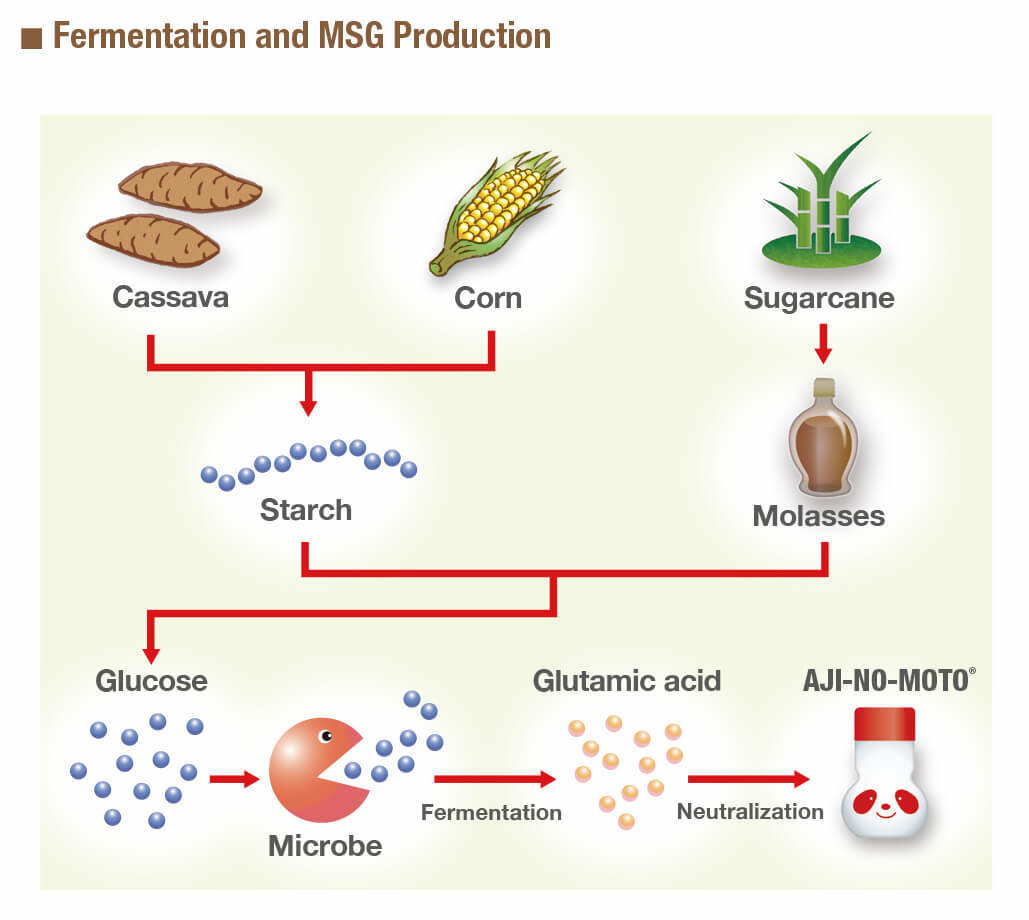MSG Deep Dive part 1: Why Befriend the Notorious MSG and Its MSG-less Kin?
MSG for flavor and health, history of MSG and how MSG works
Hello there! We’ve had some great conversations this week about our summer gardening projects, and I’ll continue with that discussion next week in the “shortie” dispatch.
For June’s longer deep-dive posts, let’s focus on monosodium glutamate (MSG) because not all of you are gardeners but we’re all curious cooks! This first MSG dispatch covers basic information. As I progress, I’ll miss stuff. Flag things and ask questions in comments. We can learn from one another.
But before MSG, my upcoming Ever-Green Vietnamese events include:
Virtual, Cherry Bombesquad Meetup, demo + talk with Kerry Diamond (members only)
Los Angeles, 6/21, Phenakite, solstice cooking + dinner with Minh Phan
Five years ago, I would have shied away from writing about MSG. So many people were ready to pounce on the flavor enhancer for being harmful to health and well being. MSG has sadly had a bad reputation.
Invented in 1908 in Japan, the crystalline seasoning became synonymous with the Chinese restaurant syndrome since 1968, when Dr. Robert Ho Man Kwok from the National Biomedical Research Foundation wrote his fateful letter to The New England Journal of Medicine. In truth, the terms mislead: MSG is in many beloved processed foods like Doritos and Top Ramen, not just Chinese food. More importantly, scientific research spanning from the 1970s to today shows no definite link between MSG and reported symptoms, such as heart palpitations, headaches, and sweating. Yes, a small number of people have short-term reactions to MSG but they are mild. And, yes, if you eat a large amount of MSG on an empty stomach, you’ll feel some side effects. But how often will that happen?
The term Chinese restaurant syndrome is racially offensive because it heaps negativity on one cuisine and the people who serve it up; the MSG scare has led some Chinese restaurants to state “we use no MSG” on their menus. Given all that, in medical discussions, Chinese restaurant syndrome has been replaced by the gentler, if not convoluted MSG symptom complex. That wonky phrase frames MSG on more nuanced, neutral terms that are not culturally loaded, blameful or shameful.
MSG for Flavor
In the main, fear of MSG has been replaced by curiosity. What was once seen as a culprit is now seen as a potential friend. Popular chefs such as David Chang and Rodney Scott have praised MSG in their cookbooks and elsewhere. A few months back, I polled PTSF readers and many of you were neutral, open, or already using MSG.
Why did I start using MSG in my recipes? For most of my culinary life, my savory dishes, made with fish sauce and animal proteins, were terrific without enhancements. However, while working on my plant-based cookbook, Ever-Green Vietnamese, I sometimes got into a veggie-centric bind. I needed an ingredient to finesse the flavors that I expect in Vietnamese cooking. If adding additional salt only made the dish harshly salty, I reached for a flavor enhancer. BAM! A subtle, extra-wonderful đậm đà (boldly savory) taste appeared. I don’t call for MSG and flavor enhancers in every EGV recipe, but rather, I use it when it’s pivotal. By writing and cooking from the book, I’ve gotten comfier with using flavor enhancers and reach for one more often.
My support of the notorious MSG was cited in pre-release press. Funnily, a PR company representing a major MSG producer emailed this:
MSG for Health
Recently, there’s also been a louder call for using MSG to help people lower their sodium intake. An Atlantic article (paywalled so here’s a summary) got lots of people thinking after it cited the World Health Organization’s March 2023 call for everyone to reduce sodium intake, and the Food and Drug Administration’s consideration of letting flavor enhancers like MSG be used as a salt substitute.
The solution to lowering sodium intake isn’t to simply tell people to eat less salt (it’s hard to do that for the long term!), but to determine and incorporate decent swaps. MSG is a viable partial substitute for substitute.
Why MSG? MSG has about a third of the sodium as table salt, yet it has an equal if not greater power to boost the flavor in food. It’s salty and savory. Once MSG enters the body, it breaks down into glutamate which interacts with our taste buds and sends out pleasurable signals to certain parts of our brains so that as a result, we perceive savory, tasty, umami extra yumminess. That’s my simplified explanation and there are much more thorough descriptions, like this one.
A 2017 study presented by the National Institutes of Health, concluded:
Considering the available data in the scientific literature, in addition to the information provided by the flavor enhancer industry, we could verify the use of umami substances as a strategy to reduce sodium in different foodstuffs (processed and homemade foods) without affecting the perception of saltiness and, therefore, contributing to the wellness and safety of the population. Many applications evaluated showed promising results, especially in those products with elevated sodium contents such as processed meat.
Despite concerns about the toxicity potential of MSG raised by some studies, regulatory agencies have demonstrated the safety of use of this food additive through toxicity assessments and randomized double blind, placebo‐controlled studies.
Combing through such articles, I realized that few (if any) of them discuss how to buy MSG and how to use it. Most articles treat MSG as an ingredient for processed food manufacturers to deal with so that they can cut back on sodium and keep making and selling “healthier” convenience food and snacks.
My take is this: If you’re going to consume MSG for flavor and/or health, don’t outsource it. Take control of it by cooking with it. You’ll understand how MSG works. You can use MSG at a low to moderate level. That’s empowerment in the kitchen and life.
Original and Modern MSG
In the early part of the twentieth century, Japanese biochemist Kikunae Ikeda asked his wife what made her preparation of yu dofu (tofu simmered in dashi broth, an iconic classic) so wonderful tasting? She pointed to kombu (dried kelp). Ikeda set out to isolate the molecular source and in 1908, dialed things down to glutamic acid. Glutamic acid is a nonessential amino acid produced by human bodies that is also naturally present in many food ingredients.
From there, Ikeda coined the term umami (based on umai, which means “delicious” in Japanese) and also found a way to extract MSG from vegetables (initially wheat and then soybeans). He patented his process, called his product Ajinomoto (“essence of flavor”), and co-founded the eponymous company that’s now a global MSG powerhouse and producer of other umami-rich food products.
What we know as MSG is concentrated, commercially-made glutamic acid, which, when dissolved in food, adds savory deliciousness. Our bodies do not identify MSG’s glutamic acid as being different from its natural kin.
According to the U.S. Food and Drug Administration, modern MSG is made by fermenting certain starchy or sweet vegetables. Ajinomoto describes the process as being akin to making vinegar, wine, or yoghurt. This graphic from Ajinomoto roughly conveys how fermentation concentrates the presence of glutamic acid.
Yes, MSG is vegan, plant-based, and gluten-free! It’s made from vegetables such as cassava (aka tapioca and manioc), corn, sugarcane, and sugar beets.
Identifying MSG and Glutamate in Food
Glutamic acid is present in many foods. Sometimes, it’s naturally occurring, and other times, it’s added as MSG. You may not know that you’re already eating it in some favorite foods or using it in a go-to ingredient.
To identify it, don’t just look for monosodium glutamate but also keep an eye out for ingredients with naturally high levels of glutamic acid, such as hydrolyzed vegetable protein, autolyzed yeast, hydrolyzed yeast, yeast extract, soy extracts, and protein isolate; they are often used to boost flavor. Many foods — such as tomato, cheese, mushroom, meat, fish sauce, miso, and soy sauce — contain high levels of glutamic acid. That’s why they’re so beloved.
Look around your pantry and in your fridge. What contains MSG or naturally occurring glutamic acid?
As you consider how present glutamic acid is in your life, know that on a daily basis, adults consume about 13 grams of naturally occurring glutamates in food plus .55 grams via added MSG. MSG and glutamic acid should be understood, not feared or obfuscated.
Next time, I’ll offer a buying guide to MSG and MSG-less flavor enhancers. Meantime, if you have a question or insight, please leave a comment.








Notorious MSG sounds like a rap artist.
I am completely on board with using MSG as a little goes a long way. No one attacks the unhealthy qualities of packaged snack food, but they scrutinize Chinese cuisine, which is centuries older than the snack food, and provides nutritious vegetables and proteins. Food science is so badly represented these days. Thank you for writing such a clear explanation of what MSG really is and its' potential for enhancing flavor. Instead of eliminating certain foods entirely, we should appreciate them and perhaps eat them in more modest amounts to promote a healthier diet. Everything is in firing range now, from dairy to wheat, etc. Surprisingly, the human race has managed to survive it all.
Great information ! i have been banging on for years on how safe and useful MSG is ! i actually use it more than salt and other commercial seasonings as i don't need much and doesn't have the salty aftertaste . i was curious on the new process and if it was still as good as the traditional seaweed base and thank you for clarifying the process.
Great read and well presented ! thank you